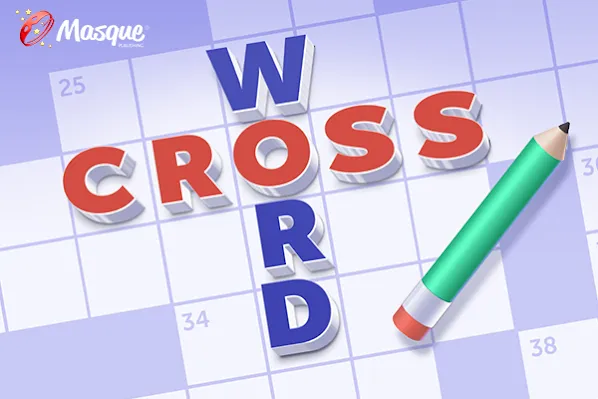VR Still Lacks Its ‘Jazz Singer,’ a Game-Changing Breakthrough — Sundance

Editor’s note: Kim Voynar and Nathaniel Luke Pinzon are co-founders of XR content and consulting studio WonderTek Labs, and are co-producers on Lena Herzog’s 2019 New Frontier selection “Last Whispers.”
Sundance Film Festival began featuring VR content at its New Frontier section in 2012, but the first wave of VR development began when cinematographer Morton Heilig filed his 1962 patent for the Sensorama. It gave viewers the passive experiences of riding a bike, a helicopter, or a go-kart, with full-color 3D video, stereo sound, haptic vibrations, scent, and wind effects.
Related stories
Sundance 2019: The 13 Best Movies of This Year's Festival
Sundance: 'Clemency' Filmmaker Chinonye Chukwu Is First Black Woman to Win Biggest Prize
2019 Sundance Film Festival Awards: 'Clemency' and 'One Child Nation' Lead Grand Jury Winners
A half century later, his technology’s promise is still waiting to be fulfilled. Head curator Shari Frilot always intended New Frontier to disarm and disrupt, and on that count the 2019 lineup ably delivered. However, if the VR industry is still yearning for its version of “The Jazz Singer” — the project that could catapult a once-fringe technology into a world-changing sensation — that was not on display.
New Frontier remains the premier home for new, new-technology artwork, and it’s also become a primary VR bellwether — much as Sundance is for independent film. At the 2012 festival, head curator Shari Frilot premiered Nonny de la Pena’s groundbreaking immersive journalism piece “Hunger in LA.” Less than a year later, de la Pena intern Palmer Luckey created a Kickstarter for an early iteration of the Oculus Rift, which Facebook purchased for $2 billion in 2014. Since then, however, VR has progressed in increments rather than leaps and bounds.
The 2019 lineup presented compelling projects such as “Reach,” produced by de la Pena’s Emblematic Group; it’s a web platform for hosting and distributing 3D location models that allows news organizations to create “walk around” VR content. There’s also “GhostFleet VR,” about the slave trade in the Thai fishing industry; and the Felix & Paul- produced “Traveling While Black,” directed by Academy Award-winning director Roger Ross Williams. That 19-minute work explores a spectrum of race issues, and puts users face-to-face with civil rights activists and the mother of Tamir Rice, the 14-year-old killed by Cleveland police in 2014.
These works aren’t intended to capture the interest of general consumers, who remain a long way from Netflix-level familiarity for concepts like 6DoF headsets (which allow users to move freely in a virtual environment) and 360 (VR that allows users to look in all directions). However, no one will care about the latest headsets until there’s must-see, can’t-miss content.
“You know, 360, I don’t know what will happen,” said Frilot. “I think that the technologists, and the companies behind the technology are more enthralled with 6DoF capability than they are with 360 capture, and I think that’s a mistake. Because the relevance of 360 to journalism, it just keeps coming up… there’s really important works that are being made with journalism in 360.”
The 2019 New Frontier lineup, which included 14 VR/AR projects and 11 360 films, included Melissa Painter’s “Embody,” a social yoga VR piece; “Gloomy Eyes,” an illegal zombie hiding out from bounty hunters; and “Grisaille,” a VR installation that invites you to join artist Teek Mach in an evolving virtual painting.
The documentary space may have the most consumer-friendly contenders, including the John Legend-executive produced “Ashe ‘68,” about tennis legend Arthur Ashe’s historic 1968 US Open win, while the comedic animated monster piece “Kaiju Confidential,” offers a take on the monster genre that puts the audience up close and personal with animated, rampaging monsters … and their neuroses.
Meanwhile, VR hardware sales are struggling. VR headset sales reached 1.9 million in Q3 of 2018 — a long way from research firm CCS Insight’s early-2018 prediction that headset sales would hit 22 million by year’s end. Tech industry pundits like CNET said VR showcased at the 2019 Consumer Electronics Show reflected “unfulfilled promise,” while Venture Beat focused on VR and AR hardware taking “small but meaningful steps” despite the notable absence of major announcements from industry leader Oculus.
For VR, “unfulfilled promise” and “small but meaningful steps” are familiar refrains. Computer scientist Ivan Sutherland invented The Sword of Damocles, the first VR head-mounted device, in 1968. Around the same time, Dr. Thomas Furness began developing virtual flight simulators for the Air Force. A second wave of interest came in 1985 with the founding of VPL Research, the first company to sell VR goggles and gloves.
In the early ‘90s, Dr. Furness’ consumer-targeted Virtual Vision retinal display headset wound up finding most of its buyers in dentists. Nintendo’s “Virtual Boy” 32-bit console launched in 1995, and manufacturing ceased a year later.
Some of the current disappointment traces back to investment strategy. The heaviest interest revolves around things that are tangible, touchable, and patentable, which means hardware and platforms, rather than content to play on them. VC investors like business plans with short runways to ROI and robust exit strategies; for now, that doesn’t suggest VR content, since no one has figured out how to monetize it among consumers.
Much of the current, consumer-focused VR content reflects the interests of gamers — unsurprising, since VR is developed in video game engines like Unity and Unreal, and early creators were game developers. With little funding available for research and development, much consumer content falls in the spectrum of “let’s shoot zombies/aliens/dead pirates.” The few explorations of VR narratives, documentaries, horror, and comedy remain nascent.
“I feel like VR is still definitely in an experimental phase, but the plug-and-play, there’s only two pieces of that [at New Frontier],” said Frilot. “Everything else is working with the technology, hacking it … it opens up new terrains of storytelling. And it also brings a sense of awe to the audience.”
Many New Frontier projects felt very experimental. “Sweet Dreams” by Marshmallow Laser Feast, is a “spatial drama” constructed of social VR, AI and digital food. “Emergence” is an open-world environment focused on individual identity within a crowd, via immersion in over 5,000 human behaviors.
Even a project from the AT&T- and Google-backed Magic Leap, “The Seven Stages of Man” (created in conjunction with the Royal Shakespeare Company) was a long way from being ready for at-home consumer consumption; it showcased an early prototype of AR-enhanced theatrical performance.
These artworks can’t be expected to stimulate the consumer headset market to levels that will support the industry. For now, that task falls to titles like “Job Simulator” or “Beat Saber” (like Rock Band, but with lightsabers instead of guitars). Meanwhile, many early VR startups are closing as they run out of early funding, and hardware manufacturers comfort themselves with modest improvements.
Maybe New Frontier can stimulate a sense of awe strong enough to sell 20 million headsets, but that demand seems both unlikely and unfair. However, until something creates that demand, investors won’t justify the billions in funding necessary to develop the content needed to sustain the industry. And without that content, we risk seeing the hard work in this wave of VR development being shelved as we await another decade or two before we can try, try again.
Kim Voynar and Nathaniel Luke Pinzon are co-founders of Seattle-based XR content and consulting studio WonderTek Labs. Voynar spent a decade as a film critic on the international film festival circuit; Pinzon’s career as a working artist focused on performance art and storytelling in immersive spaces.
Solve the daily Crossword

